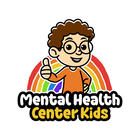In a study published in the American Journal of Psychiatry, researchers have found that children with anxiety often have overactive brain regions, especially in areas that control thinking, emotions, and fear. This heightened activity makes it more difficult for kids to control worry and stress.
The study showed that cognitive behavioral therapy (CBT), a treatment that teaches children to face fears and change negative thought patterns, can help calm these brain responses while also reducing anxiety symptoms.
After CBT, many children not only felt better but also showed more balanced brain activity. This suggests CBT helps them use thinking and self-control skills more effectively. Still, some deeper brain regions tied to fear and anxiety stayed more active, meaning some kids may need longer treatment or added support.
Researchers also found similar brain patterns in children at risk for anxiety, which showed that early brain changes may predict later symptoms. This tells us that CBT could not only treat anxiety but also help identify kids who might benefit from early care.
Understanding the Research
The researchers wanted to understand how cognitive behavioral therapy (CBT) affects the brains of children with anxiety.
To do this, they used a brain scan called fMRI, which shows how different parts of the brain are working. The children were shown faces and other images designed to trigger anxious or calm responses, and the scans recorded how their brains reacted.
The study included the following groups of young people:
- Children who had an anxiety disorder and were about to start CBT.
- Healthy children without anxiety.
- Children who did not have anxiety but were considered at risk because of their temperament.
All children in the anxiety group received CBT led by a licensed psychologist. The therapy followed a structured program that included learning about emotions, practicing coping skills, and gradually facing fears in a safe way.
Here’s a breakdown of the findings:
- Before treatment, children with anxiety showed higher activity in several brain regions. These included the frontal and parietal lobes (which help with attention and emotion control) and the amygdala (which processes fear and anxiety).
- After 12 weeks of CBT, children had fewer anxiety symptoms and improved daily functioning. Their brain scans also showed that many overactive regions returned to levels similar to or lower than those of children without anxiety.
- Not all brain activity returned to typical levels — regions like the right amygdala stayed more active after CBT. This tells us that while CBT helps, areas linked to strong emotions may need longer or additional treatment.
- Children at risk for anxiety showed brain activity similar to those with diagnosed anxiety before treatment. CBT may have driven the positive brain changes, and scans may help spot kids who could benefit from early support.
Practical Strategies for Parents and Caregivers
With these findings in mind, how can parents and caregivers help their children?
Learn the basics of CBT
CBT teaches kids how to recognize negative thoughts, challenge them, and face fears step by step. Parents can support this by encouraging children to practice these skills at home — for example, helping them reframe worries (from “What if I fail?” to “I can try my best, and that’s okay”) or celebrating small steps when they face something challenging.
Read our article on CBT for kids and CBT for teens.
Show them how you manage your own stress
Doing this gives them real-life examples of coping strategies that match what they learn in CBT. You can model coping by practicing strategies in front of your child.
For example, take slow, deep breaths and say, “I’m calming my body,” or use positive self-talk like, “It’s okay, I can try again,” when you make a mistake. You can also show them how you take breaks by stepping outside for fresh air or going for a short walk.
Watch for early signs of anxiety
Be alert to initial signs of anxiety, such as trouble sleeping, irritability, or avoiding school and social situations. Some children may also become overly clingy or express constant worries about everyday events.
If you notice these patterns continuing, it’s important to reach out to a mental health professional, such as a child therapist or psychologist. They will assess your child’s needs and recommend appropriate support.
One of the authors also mentioned that understanding who is most likely to respond to CBT can help clinicians tailor treatments and improve outcomes for children with anxiety.
Support early intervention and healthy coping in children and teens. Check out our CBT worksheets.





















































